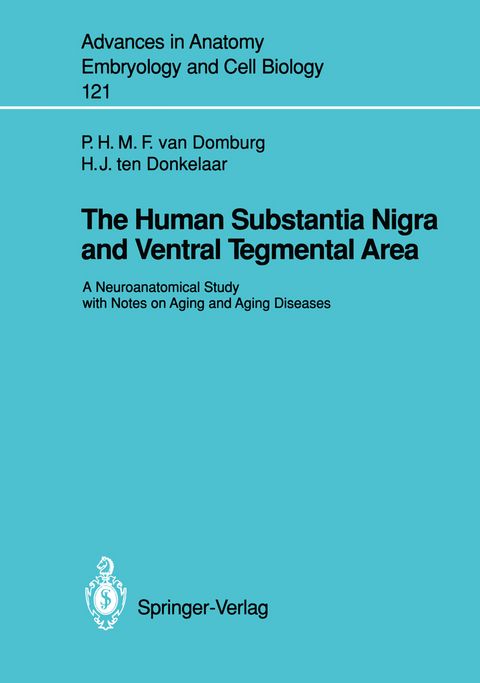The Human Substantia Nigra and Ventral Tegmental Area
Springer Berlin (Verlag)
978-3-540-52823-4 (ISBN)
1 Introduction.- 2 Materials and Techniques.- 2.1 Cytoarchitectonic Analysis.- 2.2 Quantitative Analysis.- 2.3 Immunohistochemical Procedures.- 2.4 Neuropathological Procedures.- 3 Comparative and Developmental Notes.- 3.1 The SN and VTA in Lower Tetrapods.- 3.2 The Mammalian SN and VTA.- 3.3 Development of the SN and VTA.- 4 The Human Substantia Nigra and Ventral Tegmental Area.- 4.1 Introduction.- 4.2 Cytological Features.- 4.3 Cytoarchitectonic Subdivision.- 4.4 Chemoarchitecture.- 4.5 Fiber Connections of the Primate SN Complex.- 4.6 A Model of Human Nigral Organization.- 5 Neuropathological Aspects.- 5.1 Introduction.- 5.2 Involvement of the SN and VTA in Basal Ganglia Diseases.- 5.3 Involvement of the SN and VTA in AD.- 6 Quantitative Aspects.- 6.1 Introduction.- 6.2 Age-Related Neuronal Loss.- 6.3 Neuronal Loss in the SN and VTA in AD and PD.- 7 Functional and Pathophysiological Considerations.- 7.1 Lesion Studies on the SN.- 7.2 Some Functional and Pathophysiological Aspects of Mesencephalic DAergic Projections.- 7.3 The Involvement of the SN and VTA in AD and PD.- 8 Summary.- Acknowledgements.- References.
| Erscheint lt. Verlag | 14.1.1991 |
|---|---|
| Reihe/Serie | Advances in Anatomy, Embryology and Cell Biology |
| Zusatzinfo | X, 132 p. 36 illus. |
| Verlagsort | Berlin |
| Sprache | englisch |
| Maße | 170 x 242 mm |
| Gewicht | 325 g |
| Themenwelt | Medizin / Pharmazie ► Medizinische Fachgebiete ► Neurologie |
| Studium ► 1. Studienabschnitt (Vorklinik) ► Anatomie / Neuroanatomie | |
| Naturwissenschaften ► Biologie ► Humanbiologie | |
| Schlagworte | aging • Altern • Altern / Älterwerden / Altwerden • Alzheimer's disease • brain • central nervous system • Gehirn • nervous system • Parkinson • Zellarchitektur • zentrales Nervensystem |
| ISBN-10 | 3-540-52823-7 / 3540528237 |
| ISBN-13 | 978-3-540-52823-4 / 9783540528234 |
| Zustand | Neuware |
| Haben Sie eine Frage zum Produkt? |
aus dem Bereich




